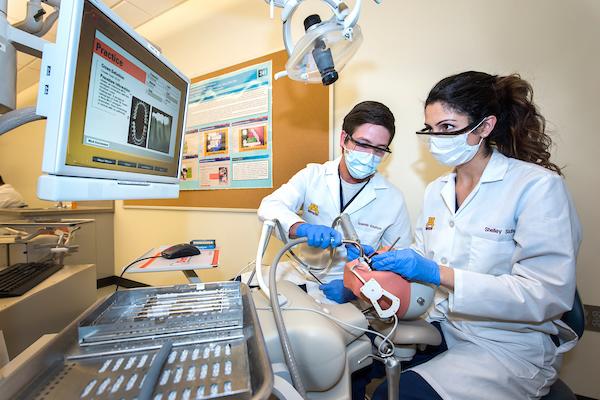
The Profession
Who They Are
The dental profession consists of health care providers whose primary mission is oral health wellness. The profession is made up of dentists, dental hygienists and support personnel such as dental chairside assistants, receptionists, practice managers, business managers, insurance and other office staff. Dentists are part of the total health care team and consider the complete health of the patients, understand his/her medication and medical condition-especially when the disease or medication affects the dental condition or treatment. A dentist's treatment is often in concert with medical treatment for a patient, such as the health of the cardiovascular system, treatment of communicable diseases or systemic diseases, as well as treatment of developmental, psychological, or behavioral problems.
What They Do
Dentists are primarily concerned with the preservation and maintenance of the health of the teeth, periodontium (gums and supportive bone), muscles of mastication and temporomandibular joints (TMJs). Their skills focus on prevention and restoration of the common dental diseases, treating associated infections and developmental abnormalities. They are involved with prevention of oral diseases, esthetics, form and function, and comfort and wellness. Dentists are not only providers of clinical care and health but are most often the managers of a small business. They can be personnel managers, business managers and planners, financial planners for themselves and their team. They are expert at people skills; at establishing relations and communication with their team (staff), their patients and the community.
Where They Work
Most dentists work in private practice. They can practice alone or in partnership with one or more other dentists. Dental businesses, clinics and hospitals also employ dentists. Dentists have the option of practicing in the military, the Public Health Service, the Indian Health Service and the National Health Service Corps.
Outlook
The future of dentistry looks great! Because of the aging population and the number of practicing dentists at or near retirement age, the dentist to population ratio is also changing. Dental graduates currently find a relatively easy market in which they can locate practices. Financing the purchase of part of an existing practice is now usually very attainable. Even start-up practices are often now supported by banks and other lending institutions.
Preparing to Apply
There are many aspects to a competitive dental school application. One of which is the Dental Admissions Test, or DAT. You can find out more about taking the DAT from the American Dental Association.
Students must complete the required prerequisite coursework for the dental school to which they are applying. Because dental schools have slightly different requirements, it is important to research schools you are interested in applying to while planning your coursework. Find out more about the University of Minnesota School of Dentistry’s prerequisite courses here. Dental schools also require relevant experience, volunteering, and shadowing. Visit the PHSRC’S Build Your Student Portfolio page to learn about preparing for a health program in these areas.
Students apply to dental school using the ADEA Associated Dental School Application Service, or AADSAS. This application opens in Mid-May and closes in early February. More information about the AADSAS application can be found here.